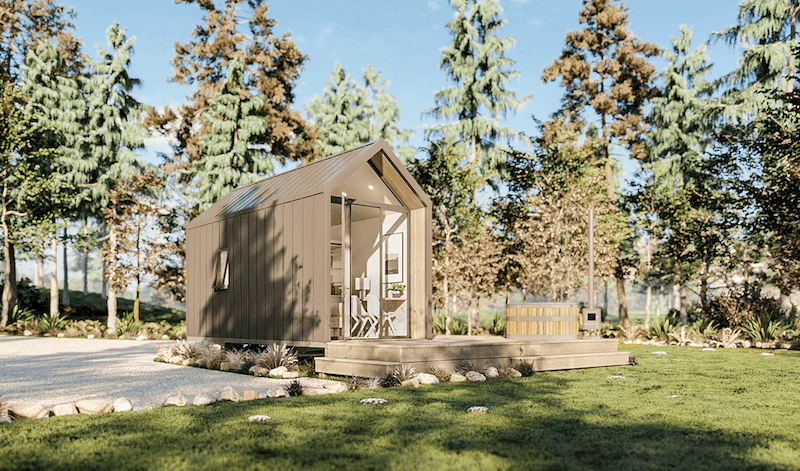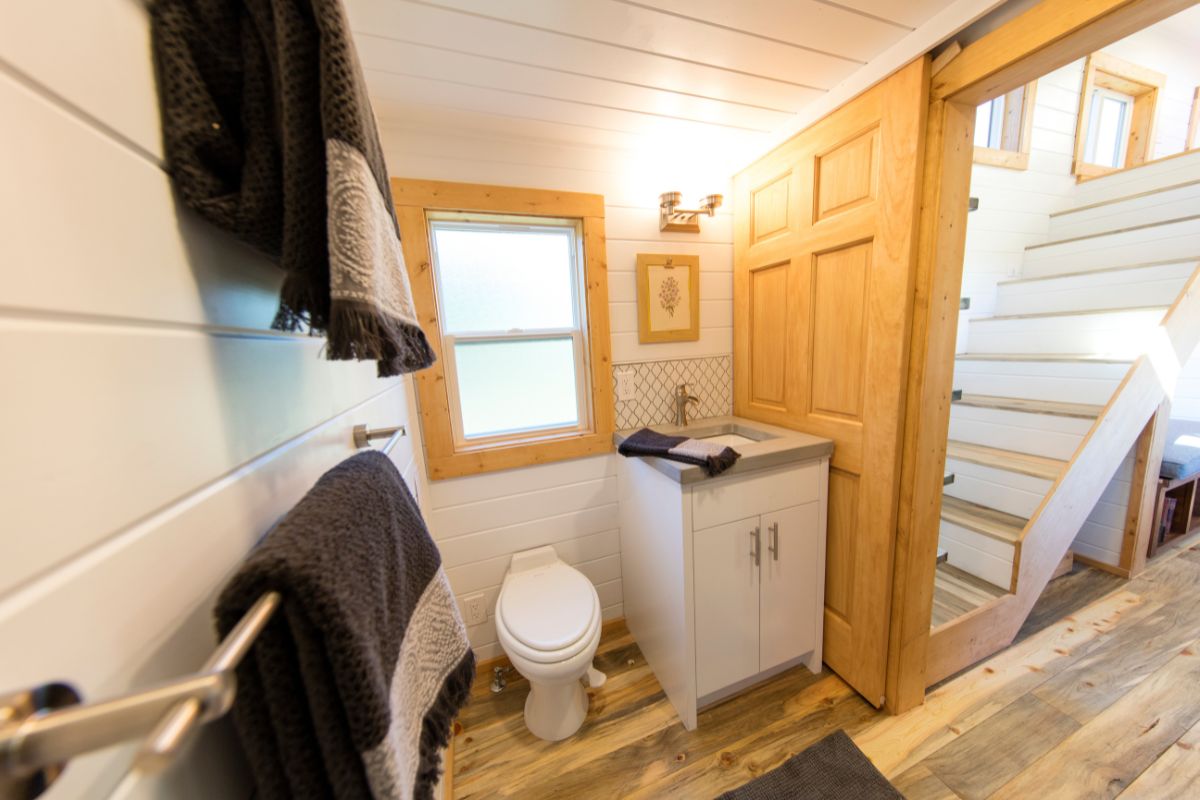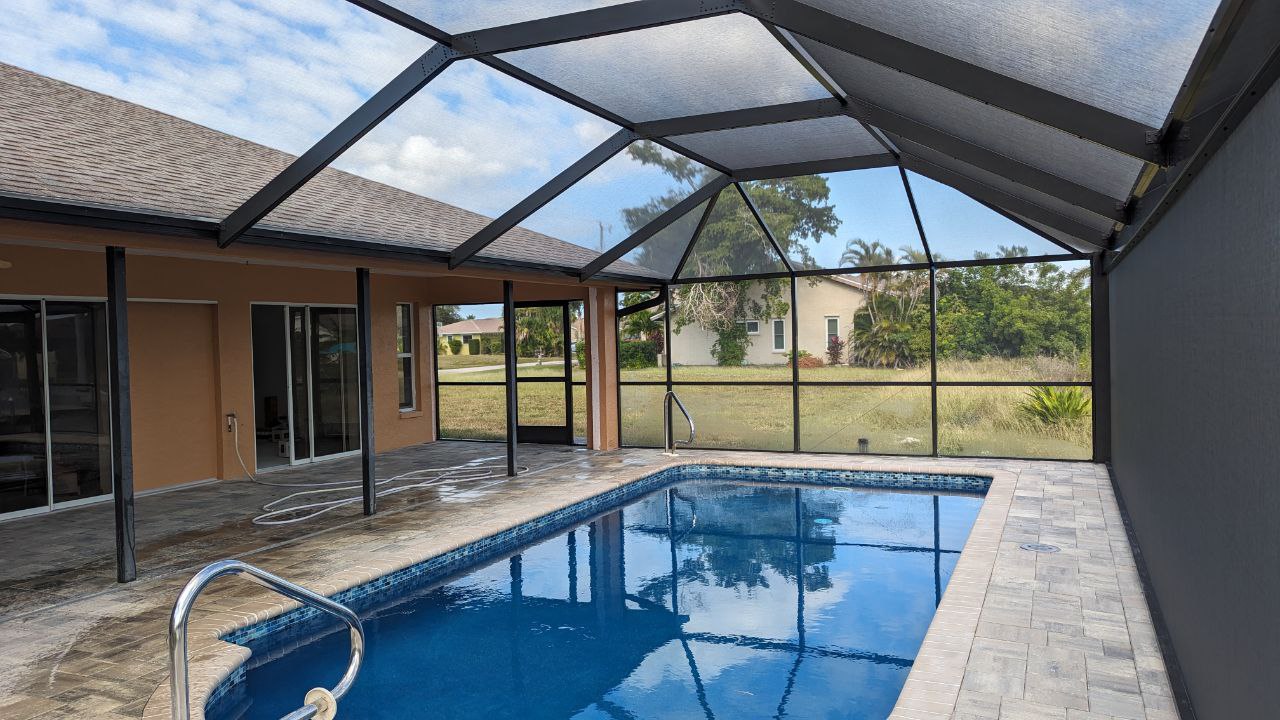When wiring your tiny house, assess power needs, strategically plan the electrical layout, and choose the right wire gauge. Install a safe electrical panel with proper grounding and bonding, prioritizing energy-efficient appliances like LED lighting.
Consider solar options and guarantee adequate ventilation for appliances. Schedule regular inspections to prevent hazards, guaranteeing compliance with safety standards. Engage professionals for thorough evaluations and timely upgrades. With these foundational steps, you can enhance safety and explore deeper facets.
Key Takeaways
-
Ensure proper wire gauge selection for circuit current to prevent overheating.
-
Utilize Romex wiring for interior to balance cost and effectiveness.
-
Position the electrical panel in a dry, accessible area for safety.
-
Conduct regular inspections to identify and resolve potential hazards.
-
Hire qualified electricians to adhere to safety regulations and standards.
Understand Your Power Needs
Before diving into the electrical setup of your tiny house, it’s vital to precisely assess your power needs. Identify each appliance's wattage and calculate the total demand. Consider daily usage patterns to estimate your energy consumption accurately. Factor in necessary items like lighting, heating, cooling, and any electronic devices. Don't forget about peak demand times, where several appliances might operate simultaneously.
Next, evaluate your power sources. Will you rely on solar panels, a generator, or grid connection? Each option affects your capacity and backup requirements. It’s important to account for power storage solutions like batteries, ensuring they can handle your energy load. By thoroughly understanding your power requirements, you lay the groundwork for an efficient and reliable electrical system in your tiny house.

Plan Your Electrical Layout
When planning your electrical layout, start by sketching a detailed floor plan of your tiny house. Identify the location of major appliances, light fixtures, and outlets, guaranteeing they align with your daily needs. Place outlets strategically to avoid overloading circuits. For instance, dedicate separate circuits for high-demand appliances like refrigerators or air conditioners.
Map out the path for wiring runs, keeping them as short and direct as possible to minimize voltage drop. Label each circuit on your plan, matching it to a specific breaker in your panel. Consider the placement of switches, guaranteeing easy accessibility. Plan for future expansions or upgrades by including extra conduits. This foresight guarantees a streamlined, efficient electrical system tailored to your unique tiny house layout.
Choose the Right Wiring
With your electrical layout meticulously planned, the next step is selecting the appropriate wiring to guarantee safety and efficiency in your tiny house. Begin by choosing the correct wire gauge, which depends on the current your circuits will carry. For standard 15-amp circuits, use 14-gauge wire. For 20-amp circuits, opt for 12-gauge wire. Ascertain you use copper wire for its superior conductivity and reliability.
Consider using Romex (non-metallic sheathed cable) for interior wiring, as it's cost-effective and easy to handle. Pay attention to the wire’s insulation rating; it should be suitable for the temperatures and conditions it will encounter. Select wires labeled with a ground wire to maintain grounding throughout your system, enhancing safety.
Install a Safe Electrical Panel
Installing a safe electrical panel in your tiny house is essential for managing electricity effectively and preventing hazards. First, select a panel that matches your power needs, guaranteeing it can handle the total amperage of all circuits. Position the panel in a dry, accessible location, away from moisture and direct sunlight. Use a stud finder to secure it firmly to the wall, maintaining stability.
Next, label each breaker clearly, indicating the corresponding circuit for easy identification and maintenance. Ascertain all connections are tight to prevent arcing or overheating. Utilize a certified voltmeter to verify voltage levels and confirm correct polarity. Finally, consult local codes and regulations to verify compliance, enhancing safety and reliability in your electrical system.
Prioritize Grounding and Bonding
To guarantee your tiny house's electrical system is both safe and efficient, prioritize grounding and bonding. Grounding connects your electrical system to the earth, providing a path for excess voltage during a fault, reducing shock risk. Use a copper grounding rod driven deep into the ground, connecting it to your main electrical panel with a copper conductor.
Bonding, on the other hand, guarantees all metal parts are electrically connected, maintaining equal electrical potential. This prevents voltage differences that could cause electric shocks. Use bonding jumpers to connect metal plumbing and structural components back to the grounding point. Always adhere to the National Electrical Code (NEC) standards, making sure your work is inspected and verified by a qualified electrician.
Strategically Place Outlets and Switches
After confirming your tiny house's electrical system is properly grounded and bonded, focus on the strategic placement of outlets and switches. Begin by evaluating your floor plan and identifying areas where power is most needed. Place outlets near kitchen counters, workspaces, and sleeping areas for convenience.
Consider installing USB outlets for charging devices. Position light switches at entry points and near the bed for easy access. Verify switches are mounted at a standard height of 48 inches from the floor for comfort and accessibility. Avoid overloading circuits by distributing outlets evenly across circuits. Plan for future needs; install extra outlets to accommodate potential changes. Maintain a minimum distance of 6 feet between kitchen outlets to meet safety standards.

Invest in Energy-Efficient Appliances
While designing your tiny house, it’s crucial to contemplate the impact of energy-efficient appliances on your overall energy consumption. Selecting appliances with Energy Star ratings can substantially reduce your electricity usage, guaranteeing peak performance with minimal energy waste. Focus on high-efficiency refrigerators, induction cooktops, and LED lighting, which consume less power compared to their conventional counterparts. Prioritize appliances with inverter technology, as they adjust power consumption based on usage, maximizing efficiency.
Consider the appliance’s energy demand in watts and verify it aligns with your electrical system's capacity. An energy-efficient appliance not only conserves energy but also reduces strain on your wiring, enhancing safety. Furthermore, investing in these appliances decreases operational costs and environmental impact, aligning with sustainable living goals for your tiny house.
Consider Solar Power Options
Harnessing solar power is a strategic move for enhancing the energy independence of your tiny house. Start by evaluating your energy consumption to determine the appropriate solar panel capacity. Calculate your daily watt-hour usage, considering all devices and appliances.
Choose photovoltaic panels that meet or exceed this demand. Next, install a high-quality charge controller to regulate battery charging, preventing overcharging and extending battery life. Opt for deep-cycle batteries with sufficient storage for cloudy days. Confirm your inverter’s capacity matches your maximum load requirement, allowing for efficient AC power conversion.
Position solar panels effectively, angled towards the sun, maximizing exposure. Regularly maintain your system by cleaning panels and checking connections for corrosion, guaranteeing peak efficiency and longevity.
Ensure Proper Ventilation for Appliances
Maximizing energy efficiency in your tiny house goes hand in hand with guaranteeing proper ventilation for appliances.
Without adequate airflow, heat-generating devices like refrigerators, stoves, and heaters can overheat, leading to decreased performance and potential hazards. Install vent fans near cooking appliances to efficiently expel heat and moisture. Make sure refrigerators have sufficient clearance from walls for ideal air circulation. For electric heaters, maintain the manufacturer’s recommended distance from walls and other items to prevent overheating.
Additionally, use vented range hoods to remove cooking byproducts and excess heat. Regularly check and clean filters to guarantee peak performance. Confirm all vent openings remain unobstructed and are correctly sized to handle the appliance’s output. Proper ventilation not only enhances safety but also prolongs appliance lifespan.
Schedule Regular Electrical Inspections

Regular electrical inspections are essential to maintaining the safety and functionality of your tiny house.
By scheduling these inspections, you can identify potential hazards like frayed wires, loose connections, or outdated components before they become serious issues. You should hire a qualified electrician to thoroughly check your wiring, outlets, and circuit breakers. They'll guarantee that all installations comply with current safety codes and standards.
During inspections, electricians will test your system's capacity to handle your daily electrical load. They'll verify that your grounding and bonding are intact to prevent electrical shocks or fires. Regular inspections also help in evaluating the efficiency of your electrical system, allowing you to make informed decisions about upgrades or repairs. Don’t overlook this important step in maintaining a safe living environment.
Conclusion
By following these essential electrical tips, you'll guarantee your tiny house is both safe and efficient. First, accurately assess your power needs to avoid overloading circuits. Plan your layout meticulously, selecting the right wiring for durability and safety.
Install a reliable electrical panel and emphasize proper grounding and bonding. Invest in energy-efficient appliances and explore solar options to reduce consumption. Confirm appliances are well-ventilated, and schedule regular inspections to maintain your system's integrity and safety.






Share: